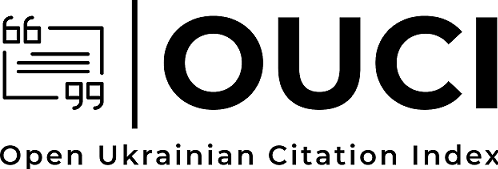КОЗАЦЬКІ ВІЙСЬКОВІ ФОРМУВАННЯ В ПОЛІТИЦІ ІНОЗЕМНИХ ДЕРЖАВ 1918–1945 рр.
DOI:
https://doi.org/10.28925/2524-0757.2019.1.2Ключові слова:
козаки, Кубань, Дон, козацька еміграція, Вільне козацтво, Козачий стан, олабораціонізм, Третій рейх, СРСРАнотація
У статті висвітлюється доля донських, кубанських і терських козаків, котрі після поразки у боротьбі з більшовиками змушені були емігрувати. Опинившись у важких матеріальних умовах, вони співпрацювали з польською і німецькою владою, особливо з нацистами в роки Другої світової війни, які використовували їх переважно для здійснення антипартизанської діяльності. Побоюючись репресій, козаки намагалися уникнути повернення до СРСР наприкінці війни і здалися в полон військам західних союзників. Проте за британсько-радянською угодою вони були репатрійовані до СРСР, де їх спіткала трагічна доля.
Завантаження
Посилання
Archiwum Akt Nowych (AAN), Ministerswo Spraw Zagranicznych (MSZ), sygn. 5322, k. 304 (Ruch wolno-kozacki. Krótki zarys historyczno-informacyjny Ekspozytury 2 Oddziału II Sztabu Głównego. 1939.) [in Polish].
Centralne Archiwum Wojskowe w Warszawie (CAW), Oddział II Sztabu Głownego (Od. II Sz. Gł.), sygn. I 303.4.2782, Nowy kurs polityki władz sowieckich w stosunku do Kozaków. Referat specjalny (prawdopodobnie lipca 1924 r.) [in Polish].
Ibid., sygn. I.303.4.5433 (Program działalności kozaków nacjonalistów (W.K)) [in Polish].
Ibid., sygn. I.303.4.5474, k.179 (Mjr. Krzymowski. Zarys historii powstania ruchu wolno-kozackiego. 29.I.1937 r.) [in Polish].
Ibid., sygn. I.303.4.5741, k14 (Zarys wojskowej polityki zagranicznej) [in Polish].
Ibid., sygn. I.303.4.5550, k. 5 (Kozacy na emigracji 1920–1932 (Krótki zarys)) [in Polish].
Ibid., sygn. I.303.4.5776, k.7 (B. Sen. St. Siedlecki. „Ruch Prometeuszowski” wsród narodów podrosyjskich na emigracji w Polsce. Warszawa, 14.I.1939 r.) [in Polish].
Instytut Polski i Muzeum im. gen. Sikorskiego w Londynie, kol. A. XII.3/39, Sprawy prometejskie. Ukraina sowiecka a wojna sowiecko-niemiecka. Opracowanie Oddziału II Sztabu Naczelnego Wodza z 1941 r. [in Polish].
II Rzeczpospolita wobec ruchu prometejskiego. (2013). Pod red. P. Libery. Warszawa [in Polish].
Beliaevskii, V. A. (1963). Vtoraia mirovaia voina: rol kazachestva v etoi voine i tragediia takovogo (1939–1945 gg.). San Paulo, 104 p. [in Russian].
Biłyj I. (1933) Kozacy i zagadnienie kozackie. Wschód–Orient. Rok IV. № 1–2 (9–10), S. 18–36 [in Polish].
Bolianovskyi, A. V. (2013). Inozemni viiskovi formuvannia u Zbroinykh sylakh Nimechchyny (1939–1945 hh.). Lviv 880 p. [in Ukrainian].
Bondarenko, V. H. (2016). Ukrainsjkyi vilnokozatskyi rukh v Ukraini ta na emihratsii (1919–1993 rr.): monoghrafiia. Zaporizhzhia, 600 p. [in Ukrainian].
Courtois, S. (2001). Czarna księga komunizmu. Zbrodnie, terror, prześladowania, Warszawa [in Polish].
Chuev, S. Kazachi formirovaniia nemetskihh spetssluzhb [12 IV 2008]. Istoriko-kulturnoie nasledie Kubani [in Russian]. http://www.gipanis.ru/?level=908&type=page&lid=879
Chuev, S. (2004). Prokliatyie soldaty. Predateli na storone III reikha. M. [in Russian].
Davydiuk, R. (2017). Ukrainska politychna emighratsiia v Polshchi: sklad, struktura, hromadsko-politychni praktyky na terytorii Volynskoho voievodstva. Lutsk, 569 p. [in Ukrainian].
Denikin, A. I. (2002). Ocherki russkoi smuty: beloie dvizheniie i borba dobrovolcheskoi armii. Mai–oktiabr 1918. (Vospominaniia. Memuary). M., Kharvest, 464 p. [in Russian].
Drobiazko, S. (2004). Pod znamenami vraga. Antisovetskie formirovaniia v sostave germanskikh vooruzhennykh sil 1941–1945 gg. M., 534 p. [in Russian].
Gdański, J. (2005). Zapomniani żołnierze Hitlera. Warszawa [in Polish].
Hoffmann, J. (2008). Rosyjscy sojusznicy Hitlera: Własow i jego armia. Warszawa [in Polish].
Horstenau, G. ( 2007). Izmeђu Hitlera i Paveliћa. Beograd [in Serbian].
Kellog, M. (2005). The Russian Roots of Nazism: White Émigrés and the Making of National Socialism, 1917–1945. Cambridge, pp. 255–265 [in English].
Kozlov, A. Velikaia Otechestvennaia voina i kazaki. Relga, №12 (285) [01.02.2006] [in Russian]. http://www.relga.ru/Environ/WebObjects/tgu-www.woa/wa/Main?textid=883&level1=main&level2=articles
Komar, V. L. (2011). Kontseptsiia prometeizmu v politytsi Polshchi (1921–1939 rr.): naukova monohrafiia. Ivano-Frankivsk, 360 p. [in Ukrainian].
Krause, W. (2006). Kozacy i Wehrmacht. Kraków [in Polish].
Kuberski, H. Gdański J. Uporczywa legenda: „Własowcy” w Powstaniu Warszawskim [31.VII 2008], serwis internetowy Gildia.pl. [in Polish]. http://www.historia.gildia.pl/wiek-xx/wojskowosc/ii-wojna-swiatowa/wlasowcy-w-powstaniu-warszawskim (22 X 2014).
Mackiewicz, J. (1955). Zbrodnia w Dolinie rzeki Drawy. Wiadomości, 43 (490) [in Polish].
Mikulicz, S. (1971). Prometeizm w polityce II Rzeczypospolitej. Warszawa [in Polish].
Naumenko, V. G. (2003). Velikoie predatelstvo: kozachestvo vo Vtoroi mirovoi voine. SPb., 448 p. [in Russian].
Newland, S. (2010). Kozacy w Wehrmachcie 1941–1945. Warszawa [in Polish].
Ot atamana Obshchekazachiego Obiedineniia general-leitenanta E. I. Balabina (1940). Vestnik Obshchekazachiego Obiedineniia v Protektorate Chekhiia i Moraviia, № 1 [in Russian].
Penkovskii, D. D. (2006). Emigratsiia kazachestva iz Rossii i yeio posledstviia (1920–1945 gg.). M., 432 p. [in Russian].
Penkovskii, D. D. (2006). Grazhdanskaia voina i emigratsiia kazachestva. Moskva, Predstavitelnaia vlast — XXІ vek: zakonodatelstvo, kommentarii, problemy, № 3, pp. 38–40 [in Russian].
Penkovskii, D. D. (2011). Kazachestvo: iskhod i vozrozhdenie (1920–2011 gg.). M., 566 p. [in Russian].
Piovesan, S. I cosacchi in Carnia e la battaglia di Pani di Raveo (1944–1945) [24 VIII 2013] [in Italian]. http://www.piovesan.net/raveo/I%20cosacchi%20in%20Carnia%20(1944)%20e%20la%20battaglia%20di%20Pani%20di%20Raveo.pdf
Romanko, O. (2004). Musulmanskie legiony vo Vtoroi mirovoi voine, Moskva [in Russian].
Stefanutti, P. 1944–1945: l’occupazione cosacco-caucasica della Carnia e dell’Alto Friuli, srona internetowa carnialibera1944–1945. La repubblica partigiana [in Italian]. http://www.carnialibera1944.it/documenti/occupazionecosacca.htm
Szymanowicz, A. (2017). Pomiędzy Warszawą a Elbrusem i Moskwą. Aktywność niepodległościowa narodów Północnego Kaukazu i polska polityka prometejska. Wrocław [in Polish].
Shymanovich, A. Lesyk, Yu. (2017). Vilne kozatstvo i viiskova rozvidka II Rechi Pospolytoi v konteksti polityky prometeizmu. Voienno-istorychnyi visnyk: Zbirnyk naukovykh prats Natsionalnoho universytetu oborony Ukrainy, Vyp. 3 (25) [in Ukrainian].
Shkarovskii, M. (2006). Kazachii stan v Severnoi Italii. Novyi Zhurnal, № 242, pp. 202–219 [in Russian].
Tymofejev, A. (2010). Rusy i Druhy svetsky rat u Jugoslavyji : utycaj SSSR-a I ruskich emygranta na dohaђaje u Jugoslavyji 1941–1945. Beograd [in Serbian].
Tolstoy, N. Forced Repatration to the Soviet Union: The Secret Betrayal [in English].
http://www.fortfreedom.org/h16.htm
Tołstoj, N. (1986). The Minister and the Massacres. London [In English].
Tołstoj, N. (1977).Victims of Yalta. London [in English]
Tolstoj, N. D. (1996). Zhertvy Yalty: o nasilstvennoi repatriatssii sovetskikh grazhdan posle Vtoroi mirovoi voiny. Moscow [in Russian].
Опубліковано
Як цитувати
Номер
Розділ
Ліцензія
Авторське право (c) 2019 Київські історичні студії

Ця робота ліцензується відповідно до Creative Commons Attribution-NonCommercial-ShareAlike 4.0 International License.
Автори, які публікуються у цьому журналі, залишають за собою право на авторство своєї роботи та передають журналу право першої публікації цієї роботи на умовах публічної ліцензії Creative Commons: Attribution-NonCommercial-ShareAlike 4.0 International (CC BY-NC-SA 4.0), котра дозволяє іншим особам вільно розповсюджувати опубліковану роботу з обов'язковим посиланням на авторів оригінальної роботи та першу публікацію роботи у цьому журналі.














